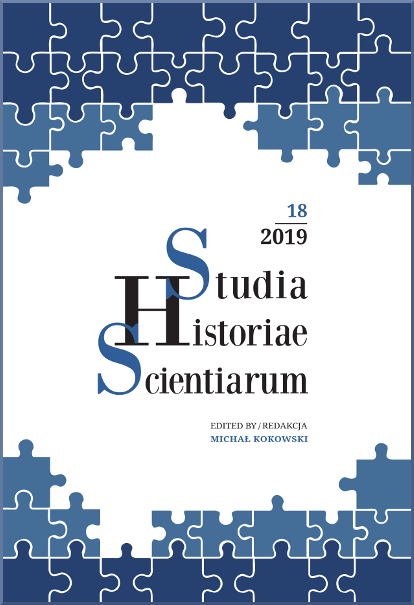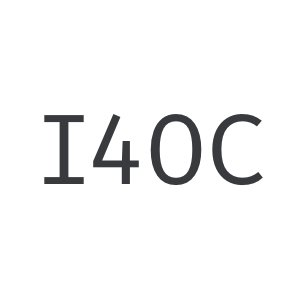Some remarks and documents concerning the emigration of Polish mathematicians during the 1930s and early 1940
DOI:
https://doi.org/10.4467/2543702XSHS.19.006.11012Keywords:
emigration of Polish mathematicians, occupation by Nazi Germany, problems of academic job market, Society for the Protection of Science and Learning (SPSL), Shapley’s Asylum Fellowship PlanAbstract
The history of the sufferings and the emigration of mathematicians under Nazi influence would be very incomplete without considering the perhaps most vibrant and at the same time most victimized European mathematical school of the 1930s, namely the Polish one. Polish mathematical emigration contributed – similarly to German-speaking emigration – considerably to the development of mathematics in the host countries, particularly in the United States.
The paper contributes to the discussion with some archival documents from two specific sources, which have so far found relatively little attention among historians of mathematics. These are the files of the Society for the Protection of Science and Learning (SPSL) at the Bodleian Library in Oxford, UK, and the files related to the Asylum Fellowship Planorganized by the Astronomer at Harvard University Harlow Shapley, now in possession of the Harvard University Archives.
References
ARCHIVAL SOURCES
Society for the Protection of Science and Learning(SPSL), Bodleian Library, Oxford, UK.Harvard University Archives, Harlow Shapley Refugee Files. HUG 4773.10 Asylum Fellowship Plan.
PRINTED LITERATURE
Anon 1958: Salomon Lubelski. Acta Arithmetica 4, pp. 1–2.
Ciesielska, Danuta; Maligranda, Lech 2014: Alfred Rosenblatt (1880–1947). Wiadomości Matematyczne 50 (2), pp. 221–259 [in Polish].
Coifman, Ronald R.; Strichartz, Robert R. 1989: The school of Antoni Zygmund. [In:] A century of mathematics in America III (Providence, R.I.: American Mathematical Society), pp. 343–368.
Duda, Roman 2012: Emigration of Mathematicians from Poland in the 20th century (roughly 1919–1989). Organon 44, pp. 95–125.
Duda, Roman 2014: Pearls from a Lost City. The Lvov School of Mathematics. Providence: AMS.
Burdman Feferman, Anita; Feferman, Salomon 2004: Alfred Tarski. Life and Logic. Cambridge: Cambridge University Press.
Jones, Besse Zaban 1984: To the Rescue of the Learned: The Asylum Fellowship Plan at Harvard, 1938–1940. Harvard Library Bulletin 32, pp. 205–238.
Józwik, Izabela; Maligranda, Lech; Terepeta, Małgorzata Ewa 2017: Stefan Kempisty (1892–1940). Antiquitates Mathematicae 11(1), pp. 61–111.
Kac, Mark 1985: Enigmas of Chance. An Autobiography. Berkeley: University of California Press. Partially available online: https://books.google.pl/books?id=1ZWl39UJWycC&printsec=frontcover.
Krätzel, E. and Ch. Lamm 2013: Von Wiesbaden nach Tiflis. Die wechselvolle Lebensgeschichte des Zahlentheoretikers Arnold Walfisz. Mitteilungen der Deutschen Mathematikervereinigung 21, pp. 42–51.
Kuratowski, Kazimierz 1980: Half a century of Polish mathematics: remembrances and reflections. Warsaw and Oxford: Pergamon Press.
Leray, Jean 1980: My friend Julius Schauder. [In:] Walter Forster (ed.), Numerical Solution of Highly Nonlinear Problems. Amsterdam – New York: North-Holland Pub. Co., pp. 427–439.
Maligranda, Lech 2011: Józef Marcinkiewicz (1910–1940) – On the Centenary of Birth. [In:] Marcinkiewicz Centenary Volume. Warsaw: Polish Academy of Sciences, pp. 133–234.
Menger, Karl 1994: Reminiscences of the Vienna Circle and the Mathematical Colloquium, edited by L. Golland, B. McGuinness, and A. Sklar. Dordrecht: Kluwer.
Nossum, Rolf 2012: Emigration of mathematicians from outside German-speaking academia 1933–1963, supported by the Society for the Protection of Science and Learning. Historia Mathematica 39, pp. 84–104. DOI: 10.1016/j.hm.2011.08.002. Available online: https://www.sciencedirect.com/science/article/pii/S0315086011000498/pdfft?md5=efe72fd709ec9e99aa6f7a001282ade9&pid=1-s2.0-S0315086011000498-main.pdf.
Reid, Constance 1982: Neyman from Life. New York: Springer.
Rider, Robin E. 1984: Alarm and opportunity: Emigration of mathematicians and physicists to Britain and the United States, 1933–1945. Historical Studies in the Physical Sciences 15, pp. 107–176. DOI: 10.2307/27757544. Available online: https://www.jstor.org/stable/27757544.
Schmidt am Busch, Hans-Christoph; Wehmeier, Kai F. 2005: Heinrich Scholz und Jan Łukasiewicz. [In:] Hans-Christoph Schmidt am Busch and Kai F. Wehmeier (eds.) 2005, Heinrich Scholz: Logiker, Philosoph, Theologe. Paderborn: Mentis, pp. 119–131.
Siegmund-Schultze, Reinhard 2001: Rockefeller and the Internationalization of Mathematics Between the Two World Wars. Basel etc.: Birkhäuser. Partially available online: https://books.google.pl/books?id=p1EmmMaBL4sC.
Siegmund-Schultze, Reinhard 2009:Mathematicians fleeing from Nazi Germany: Individual Fates and Global Impact. Princeton and Oxford: Princeton University Press.
Siegmund-Schultze, Reinhard 2012: Czech German-speaking migration of mathematicians to and from Czechoslovakia, caused by National Socialism in Germany. History of Sciences and Technology (Dějiny věd a techniky) 45, pp. 141–166.
Steinhaus, Hugo 2015–2016: Mathematician for all Seasons, 2 volumes. Cham: Birkhäuser. Partially available online: vol. 1 (2015): https://books.google.pl/books?id=V4hNCwAAQBAJ&printsec=frontcover; vol. 2 (2016): https://books.google.pl/books?id=IeOKCwAAQBAJ&printsec=frontcover.
Ulam, Stanisław 1976: Adventures of a Mathematician. New York: Scribner’s. Partially available online: https://books.google.pl/books?id=U2_zEZOHdU4C&printsec=frontcover.
Woyczyński, Wojbor A. 2001: Seeking Birnbaum or Nine Lives of a Mathematician. The Mathematical Intelligencer 23/2, pp. 36–46. DOI: 10.1007/BF03026626.
Downloads
Published
Issue
Section
License
Copyright (c) 2019 Reinhard Siegmund-Schultze

This work is licensed under a Creative Commons Attribution-NonCommercial-NoDerivatives 4.0 International License.





























